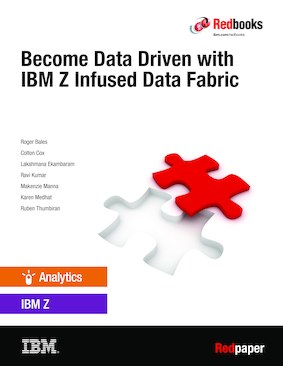
Published on 02 August 2022, updated 02 August 2022
Share this page:
ISBN-10: 0738460729
ISBN-13: 9780738460727
IBM Form #: REDP-5680-00
Authors: Makenzie Manna, Roger Bales, Colton Cox, Lakshmana-Narasimhan Ekambaram, Ravi Kumar, Karen Medhat and Ruben Thumbiran
Abstract
The expansion of digital transformation initiatives resulted in the exponential rise of data generation. It is now apparent that for organizations to meet their rapidly changing business needs, they must use their most current data to fuel their insights.
However, how to do so efficiently and effectively is still a challenge for most organizations that are trying to solve today’s complex business problems. Contributing to this challenge is that organizations are turning to a hybrid cloud approach of their IT infrastructure, scaling to include on-premises and cloud environments, in response to the data growth. This approach results in the requirement to integrate various data formats from disparate data sources into a central and unified view for use in analytics and AI, with security and privacy as a top priority.
As a solution, organizations are adopting the emerging architectural approach. This approach enables efficient data integration across environments, simplifies the delivery of disparate data throughout an organization, and enables self-service data consumption and governance.
Organizations with investments in the IBM Z platform have a unique opportunity to integrate them into their data fabric strategy. A data fabric strategy makes mission-critical data that is on Z readily available for real-time decision making by using data where it originates, which achieves faster time-to-insight.
This IBM Redbooks publication introduces the emerging concept of a data fabric and how integration of valuable data that is stored on IBM Z enables deeper insights and improved AI capabilities.
The intended audience for this publication includes data science professionals, such as Data Stewards, who want to develop and implement practices for building out a data governance framework that is facilitated by data fabric for AI workloads on IBM Z. The audience also can include anyone who wants to use the rich capabilities of the IBM Z environment by using a data fabric that is infused with their business-critical data and applications that are on the platform.
Table of Contents
Chapter 1. The challenge of digital transformation
Chapter 2. Using IBM Z strengths in a Data Fabric
Chapter 3. Securely connect a Data Fabric to any data source, anywhere
Chapter 4. Data governance and discovery
Chapter 5. Security and compliance with automated data governance
Chapter 6. Consuming data from a Data Fabric
Appendix A. Unlock IBM Z data for your AI journey